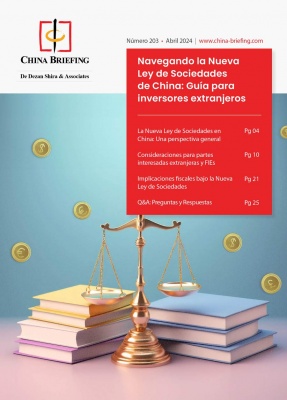Global Manufacturing in China Changes Tune as Exports Slow and India Rises
May 21 – Subtle changes are occurring in the global and domestic perception of China as a viable cheap manufacturing source as the country grapples with the imbalances caused by its export driven economy. While much of China’s foreign direct investment over the past twenty years has come from initially one source – the development of foreign invested manufacturing businesses taking advantage of China’s cheap labor, land and infrastructure costs to then sell on to international markets – this has exposed a weakness in China’s ongoing progress. With 40 percent of China’s annual GDP growth dependent upon exports, a global downturn such as the one we are experiencing has had a significant impact upon the nation’s economy and security.
It is true to say that manufacturers have evolved over the past few years as more companies start to shift part of their China production to the domestic market, however the general principle of China as a low cost, export manufacturing center remains the given assumption. Yet China is aging, and this, coupled with the rise of in other developing manufacturing hubs like India and Vietnam, signals a political urgency to correct the nation’s manufacturing profile. Moves to shift this balance upstream to added-value production, and to diversify away from this traditional, yet economically skewed model, have only just started to be implemented, and with China struggling to cope with its reliance on exports, the China slow down has been sharp and in cases, severe. While the Chinese government has announced measures to assist domestic exporters as part of its economic stimulus plan, this is only a short term safety net as it encouraged its domestic manufacturers to adapt and search for a wider basket of markets. In any event, such incentives are not available to foreign owned businesses in China.
The timing of some of China’s reforms has also been unfortunate. A tightening up of the labor law last year may well have kept many Chinese in jobs that would otherwise have disappeared during the downturn. While this represents a win situation for the government, it has led many manufacturers and potential investors in China to think again. A fairly comprehensive victory by the pro-business and foreign investment friendly Congress Party suggests that India will rapidly become a major competitor for FDI dollars in the short-long term future. Barriers to FDI in India will likely be torn down, the domestic market will increasingly open up, and massive infrastructure projects, previously on the back burner due to the political horse trading will now be fast tracked. Make no mistake, with a mandate to rule, the Congress Party in India will prove a dynamic regional force in the redevelopment of India. Opportunities abound in the country, and it will see growth at a rate that China did twenty years ago. In order to cope with this, the priorities for China’s continuing development have to change. It simply cannot compete with India for much longer over cheap wages and export driven manufacturing.
The implications for China are interesting. It means that it is demographically and economically bound to follow a different route than the one it has for the past twenty years. No longer can China afford to be simply a cheap destination for investing in export manufacturing. Costs will continue to rise, and competition, in the shape of India and the tiger economies of Southeast Asia, has arrived. It means that investing in business opportunities in China has become increasingly dependent upon servicing its domestic market. That in turn has huge implications for foreign investors. Market research in China used to be somewhat perfunctory – a quick scout around which free trade zone offered the best land costs, tax deals and infrastructure. Quite clearly, this is no longer going to be enough. Setting up business to manufacture and sell to China requires a detailed study: the local area dynamics, the local culture, and of course coming head-to-head with local competition.
While Beijing, Shanghai and Guangzhou are all premium, yet market saturated cities, selling to the China market will increasingly demand greater sensitivities. Opportunities in Xinjiang require an understanding of the local Muslim population; products need to be marketed in a form of Arabic. Selling in Chongqing requires studies of the transportation system down the Yangtze. Yunnan, with several types of minorities, includes dealing with everything from Tibetan to Khmer sensitivities.
The economic factor will additionally start to raise its head, and the research needs to be spot on. Chinese competitors will always be able to supply the domestic market at a lower price. Accordingly, foreign investors in China will need to provide a better quality product, position and market it correctly, and face the threat of local companies evolving to compete. The age of quality market research as a pre-investment tool in China has arrived, and providers will need to be able to cover the entire country in order to be able to provide accurate and comparable data.
Short-term, the Chinese government is going under pressure to reduce export costs. However, with the stimulus package firmly geared towards generating more domestic demand, and competitors such as India breathing down their necks, China’s exporters look set to be in the doldrums for some time to come. Yet with 40 percent of China’s annual GDP dependent upon exports, the government is clearly in danger of getting caught between two stools. In order to reduce that burden, pressure on the government by its export driven businesses is likely to increase. Whether this manifests itself in grants to exporters, or a climb down on some aspects of the labor law, is difficult to pin point. However, in keeping Chinese businesses and domestic workers happy, the Chinese government risks losing its attractiveness as a destination for manufacturing and export driven FDI.
The implications for foreign investors require a change in the mind set away from China as a destination for purely cheap, export led manufacturing. India is increasingly going to take over this role. China now represents a huge domestic market, but one that is still largely unexplored in terms of its massive interior populations, and one that will require patience, and significant resources to crack. “China has changed” is a popular mantra that has been spoken over the years. It continues to, and in moving up and away from its role over the past two decades will increasingly demand a more sophisticated approach to its market than has, until now, been the case. Foreign investors in China, instead of just scouting around for cheap production, will now have to think carefully about their longer term position, and whether or not they really want to be a China business.
Related Reading:
India Paves the Way for fast Track Growth
Suzuki Motors Profitable Thanks to Indian Growth
China First, India Fourth in Global Manufacturing Output
The China Plus One Strategy
- Previous Article MGM Mirage’s Macau Venture Criticized by U.S. Agency
- Next Article Stanley Ho and LVMH Invest in Upscale Complex in Shanghai
























